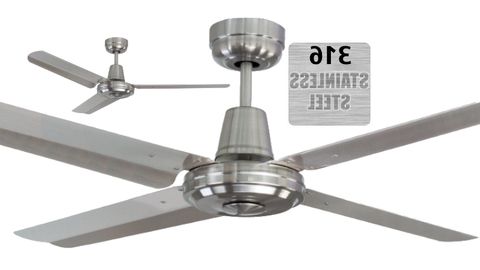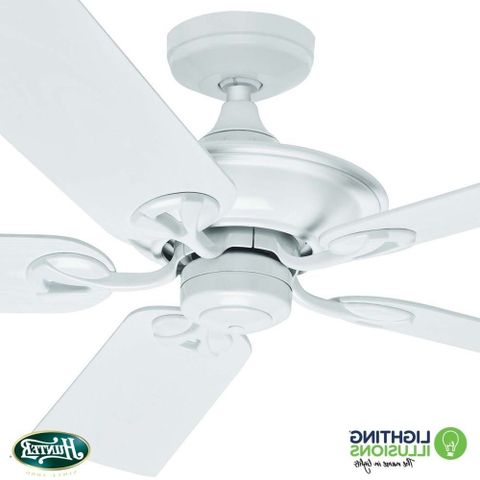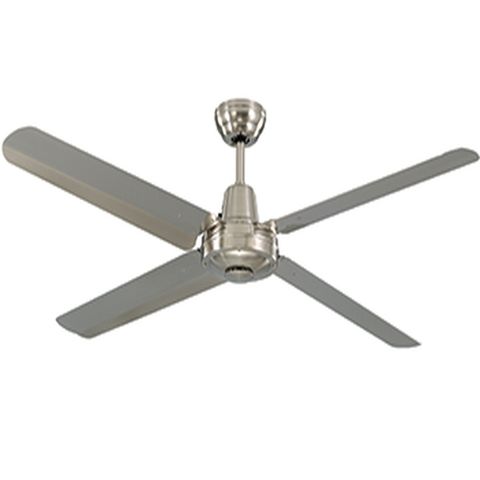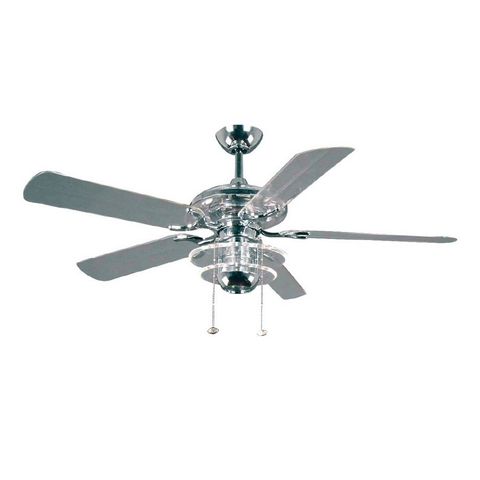Outdoor fans are more than just decorative elements – they’re functional necessities that must withstand harsh weather conditions. From scorching summer heat to relentless rain and humidity, these installations face constant challenges. The materials you choose aren’t just about aesthetics; they’re about ensuring safety, durability, and peace of mind. What happens when the elements take their toll on poorly chosen materials? You get costly replacements, safety hazards, and frustrated homeowners. This guide dives deep into selecting the best materials that will keep your outdoor fans running smoothly for years to come.
When you think about outdoor fan installation, the first thing that comes to mind might be the beautiful design or the cooling effect. But beneath all that beauty lies a fundamental challenge: corrosion. Every time moisture meets metal, there’s a potential battle between protection and deterioration. Think about it – your outdoor fan isn’t just sitting in a dry room. It’s exposed to the elements, constantly battling humidity, salt spray, temperature fluctuations, and UV radiation. These factors work together like a team of villains, slowly eating away at unprotected materials. That’s why choosing the right materials isn’t just smart – it’s essential. The difference between a fan that lasts decades versus one that needs replacement every few years often comes down to material selection. Let’s explore what makes certain materials more resilient than others and how to make informed decisions for your outdoor space.
The Science Behind Rust Formation
Rust isn’t just a cosmetic problem – it’s a structural threat that starts at the molecular level. When iron or steel comes into contact with oxygen and water, a chemical reaction occurs that transforms the metal into iron oxide. This process accelerates in humid conditions and becomes particularly aggressive when salt is present. Consider a coastal home where sea air constantly assaults outdoor equipment. The salt particles in the air act like tiny abrasives, speeding up the corrosion process dramatically. Even in inland areas, regular exposure to rainwater and high humidity creates ideal conditions for rust formation. The key insight here is that rust prevention isn’t about stopping all moisture – it’s about creating barriers that prevent the chemical reaction from occurring. Understanding this helps us appreciate why some materials naturally resist these conditions better than others.
Aluminum: The Lightweight Champion
Aluminum stands out as one of the most popular choices for outdoor fan applications. Unlike steel or iron, aluminum doesn’t rust – it forms a protective oxide layer that actually prevents further corrosion. This characteristic makes it incredibly appealing for outdoor installations. The material is also remarkably lightweight, which reduces stress on mounting hardware and makes installation easier. However, aluminum does have its drawbacks. It’s softer than steel, meaning it can dent more easily under impact. Also, it conducts electricity, which requires careful consideration for electrical safety. When comparing aluminum to other options, it offers excellent corrosion resistance while maintaining reasonable strength-to-weight ratios. For many homeowners, aluminum provides the perfect balance of durability and ease of handling. Plus, it’s readily available in various finishes, from brushed to anodized, allowing for aesthetic flexibility.
Stainless Steel: The Heavyweight Hero
Stainless steel might seem like the obvious choice for rust resistance, and for good reason. The chromium content in stainless steel creates a passive oxide layer that protects against corrosion. This makes it extremely suitable for outdoor environments where exposure to moisture is constant. But stainless steel isn’t created equal – different grades offer varying levels of protection. Grade 304 stainless steel works well in mild environments, while Grade 316 offers superior resistance to salt corrosion. The higher cost of stainless steel compared to alternatives is often justified by its longevity. Think about it – a stainless steel fan might last 30 years or more with proper maintenance, whereas other materials may show signs of wear within 10 years. Installation considerations include the material’s weight, which requires stronger mounting solutions, and the need for specialized tools during installation. The investment in stainless steel pays dividends through reduced maintenance and replacement costs over time.
Copper and Its Alloy Brothers
Copper and copper-based alloys bring unique advantages to outdoor fan applications. Copper naturally develops a patina over time, which actually serves as a protective coating against further corrosion. This means that while the appearance changes, the structural integrity remains intact. The material also possesses antimicrobial properties, which can be beneficial in outdoor settings where cleanliness matters. However, copper is more expensive than aluminum or steel, and its appearance may not suit every aesthetic preference. Brass, an alloy of copper and zinc, offers similar benefits with slightly different characteristics. The key consideration with copper-based materials is understanding their long-term visual evolution. Some people love the aged look, while others prefer more consistent appearances. The material’s conductivity also requires attention to electrical connections, making it important to work with experienced professionals.
Plastic and Composite Options
Modern composite materials have revolutionized outdoor fan construction. These materials combine plastic resins with reinforcing fibers to create strong, lightweight alternatives to traditional metals. They offer excellent resistance to moisture, UV radiation, and temperature fluctuations. Many composite fans now feature built-in UV stabilizers that prevent fading and degradation from sun exposure. The biggest advantage of plastic and composites is their low maintenance requirements. No painting, no rust concerns, and minimal upkeep needed. However, these materials often lack the structural strength of metals, especially under heavy loads or extreme weather conditions. They’re best suited for lighter fans or applications where maximum strength isn’t critical. Quality varies significantly between manufacturers, so research and proper specification are crucial before purchase. The environmental impact of these materials also deserves consideration, as they’re often less recyclable than metals.
Environmental Factors to Consider
Before making any material choice, assess your specific environment carefully. Coastal locations demand materials with exceptional salt resistance, while inland areas may require focus on humidity control. Temperature extremes affect material expansion and contraction, potentially leading to stress points and failures. Consider local climate patterns and seasonal variations. A fan installed in a desert environment faces different challenges than one in a humid tropical region. Soil conditions around installation sites can affect grounding and electrical safety. Even seemingly small factors like nearby industrial pollution or salt from road de-icing can impact long-term performance. The key is matching material properties to environmental demands rather than simply choosing based on price or availability. Sometimes the most expensive option proves to be the most economical over time due to reduced maintenance and replacement costs.
Installation and Maintenance Considerations
Even the best materials won’t perform properly if installation isn’t done correctly. Proper mounting hardware, secure fastening techniques, and attention to drainage are crucial. Some materials require special tools or techniques during installation that general contractors might not be familiar with. Regular maintenance routines help extend material life and catch problems early. For example, aluminum fans may need periodic inspection for signs of wear or damage. Stainless steel components benefit from regular cleaning to maintain their protective oxide layer. The investment in quality installation and ongoing care pays dividends in reliability and safety. Professional installation often costs more upfront but can prevent costly repairs and safety issues down the road. Consider establishing a maintenance schedule that matches your material type and environmental exposure.
Cost-Benefit Analysis for Long-Term Value
Initial costs tell only part of the story when evaluating outdoor fan materials. Consider total cost of ownership over several decades. While aluminum might cost less initially, it could require more frequent replacement in harsh environments. Stainless steel has higher upfront costs but offers decades of reliable service with minimal maintenance. The decision often depends on your priorities – budget-conscious buyers might opt for lower-cost materials, while those seeking long-term satisfaction prefer premium options. Factor in installation costs, maintenance expenses, and replacement frequency when calculating true value. Some materials might seem expensive initially but provide better return on investment through extended service life. Energy efficiency and performance improvements can also justify higher material costs. Remember that poor material choices can lead to additional costs from repairs, safety hazards, and inconvenience.
Real-World Examples and Case Studies
Consider the case of a resort in Florida where they chose stainless steel fans for their beachfront dining areas. Despite constant salt exposure and high humidity, these fans have performed flawlessly for over fifteen years with minimal maintenance. Contrast this with a residential installation using standard aluminum that required replacement after just three years due to inadequate corrosion protection. Another example involves a commercial building in a northern climate that used plastic-composite fans. These fans have endured harsh winters and UV exposure perfectly, proving that modern materials can meet demanding conditions. These real-world experiences demonstrate that material selection directly impacts performance and satisfaction. Each situation presents unique challenges, but the principles of matching materials to environment remain constant. Learning from others’ experiences helps inform better decision-making for your specific project.
Making Your Final Selection
The process of selecting rust-resistant materials shouldn’t feel overwhelming. Start by identifying your specific requirements – environment, budget, aesthetics, and performance needs. Research materials that align with these factors and consult with professionals who have experience in outdoor installations. Don’t let the cheapest option win – sometimes investing more upfront saves money and stress later. Look for certifications and warranties that indicate quality and manufacturer confidence. Visit local suppliers and ask about their experience with different materials in your area. Test samples if possible, especially for composite materials where quality can vary significantly. Remember that your choice affects not just immediate performance but also long-term satisfaction and safety. Take time to make the right decision – your outdoor space will thank you for it.
Selecting the right materials for outdoor fan installation is both an art and a science. It combines technical knowledge with practical wisdom and an understanding of your specific circumstances. The goal isn’t to pick the most expensive option but rather the most appropriate solution for your situation. Whether you choose aluminum for its lightness, stainless steel for its durability, or modern composites for their low maintenance, the key is making an informed decision. Consider the environment, your budget, and long-term goals when weighing your options. The right materials will not only protect your investment but also enhance your outdoor living experience. Don’t underestimate the importance of proper installation and ongoing care – even the best materials need attention to perform optimally. By taking the time to understand your choices, you’ll find that outdoor fan installations become less about guesswork and more about confident planning. The result? Reliable, beautiful outdoor spaces that stand the test of time and weather.














